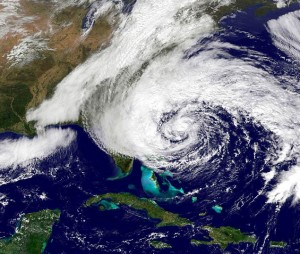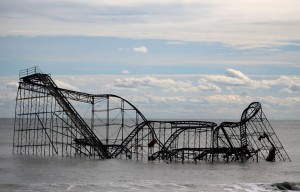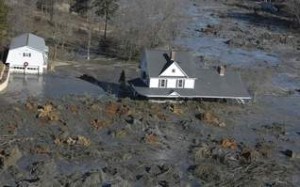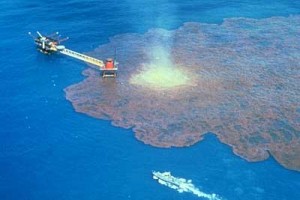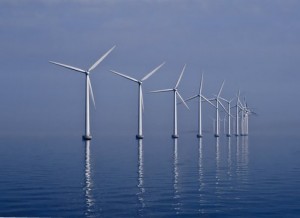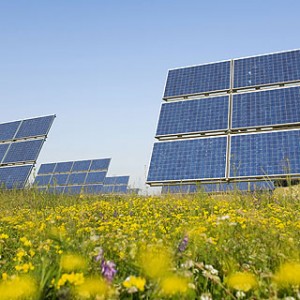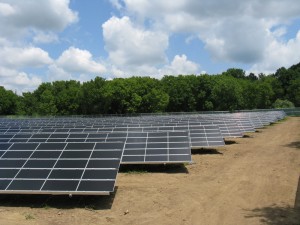The people at the Environmental Protection Agency understand the issue of increasing atmospheric Carbon Dioxide above 350 PPM. And EPA is listening. EPA has held two public comment periods in New York City on 10/23/13 and will hold nine additional public comment hearings across the country to “solicit ideas and input from the public and stakeholders about the best Clean Air Act approaches to reducing carbon pollution from existing power plants.”
| Boston, MA | 11/04/13 | Philadelphia, PA | 11/08/13 | |
| Chicago, IL | 11/08/13 | San Francisco, CA | 11/05/13 | |
| Dallas, TX | 11/07/13 | Seattle, WA | 11/07/13 | |
| Denver, CO | 10/30/13 | Washington, DC | 11/07/13 | |
| Lenexa, KS | 11/04/13 |
Click HERE to register.
And as President Theodore Roosevelt said, “Speak softly …”
The EPA web pages reviews The Issue, Health Effects, and the President’s Climate Action Plan (Pres. Obama’s remarks, Memorandum, Plan). It presents what EPA is doing to reduce carbon emissions from power plants and proposed regulations.
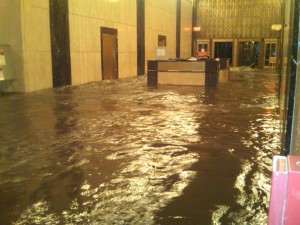
Lobby of 140 West Street, one of four Verizon Central Offices flooded during the storm. The basements were flooded from the floors to the ceilings.
It is a lot easier to prevent pollution than to clean it up. I estimated the costs of carbon sequestration to $16 to $20 Billion per Gigawatt (see “Coal Plant with Carbon Sequestration“).
Roughly one billion gallons of sludge spilled onto 300 acres, and into the Clinch and Emory Rivers when the retention pond burst at the Tennessee Valley Authority’s Kingston Steam Plant on 12/22/08 ( see “Clean Coal, My Ash“).
Roughly 5.1 Million barrels of oil burst into the Gulf of Mexico during the Deepwater Horizon catastrophe of April-July, 2011.
The DOE must also act. We need to develop wind, solar, and geothermal. We can EASILY shift to 100% renewable over the next by 2031 – “Clean and Green within 18.”
Here’s the text of my statement, as planned:
We withstood Sandy in 2012 and Irene in 2011, and three Nor’Easters in little over two years. We know that with atmospheric concentration of Carbon Dioxide at 400 ppm, and climbing, we have dramatically increased the capacity of the atmosphere to store energy, and we are increasing the acidity in earth’s oceans. We sustained and will continue to sustain bigger storms, adverse weather.
We know:
Burning coal, oil, and methane puts CO2 into the atmosphere. Burning coal puts mercury in our fish, puts lead, uranium, thorium, and other toxic heavy metals, from arsenic to zinc, into the biosphere.
Burning coal, oil and methane requires us to blow up mountains, mine, drill, or fracture the earth, and fracking, exempt from major regulatory protocols by the Bush / Cheney administration, causes earthquakes.
As Rep. Markwayne Mullen, R, Oklahoma, said, “We can’t have oil without oil spills.” Similarly, we can’t have nuclear power without radioactive waste.
But what can we do? We need energy.
We can burn coal, accept that we must destroy mountains, and try to contain most of the coal ash, carbon dioxide, lead, arsenic, mercury, thorium, uranium, zinc, … but … it is a lot easier to prevent pollution than to clean it up.
Therefore in addition to capturing carbon from existing plants – which will be expensive – we need to shift to an energy infrastructure based on efficient use of wind, solar, geothermal and biofuels.
We would have no food without solar energy.
This is obvious, but it bears repeating. We would have no food – no life – without solar energy. And we can use the energy in sunlight and in winds, which are derived from solar energy, to power our cities and towns. Parenthetically, solar modules and wind turbines can withstand hurricanes.
In New Jersey, we have quietly built 1,117.5 megawatts of solar capacity on rooftops, fields and parking lots, and another 465,5 MW is in the pipeline: 1.58 GW [1]. We can double that in three or four years. That would be 3 GW by 2018, We could install 4 GW by 2020 and 6 GW by 2025. The cost? On the order of $4.25 billion per gigawatt, and dropping – cheaper than coal with sequestration and nuclear.
Offshore wind turbines now are as large as 8 megawatts, each [2]. We can build another 5 or 6 gigawatts of offshore wind capacity by 2020 and 8 or 10 GW of the Jersey shore, 50 to 100 GW off the Eastern Seaboard, between Maine and Florida and 50 to 100 GW off the California, Oregon, and Washington by 2025. The cost? On the order of $3.5 Billion per gigawatt and dropping. Cheaper than solar.
We can drill 10,000 feet below the surface of the earth to “hydro-frack” for oil and methane. The average temperature differential is 23 F per 1000 ft [3], roughly 121 F per mile. We should also be able to use the temperature differentials between the surface of the earth and one or two miles beneath to drive geothermal energy systems – low carbon energy.
And sewage treatment plants in towns like Manalapan, NJ, where I live, a town of about 40,000 residents, produce 70,000 to 100,000 cubic feet of methane per day. (This was the subject of a discussion between me and Dale Martindell of Western Monmouth Utilities Authority, earlier this year.) We should use that and the millions of tons of agricultural waste (“Under baseline assumptions, there are currently about 111 million … dry tons of primary crop residues profitable to collect at farmgate feedstock prices of $60 … per dry ton….”) [5] to produce biofuels.
What we can do – and what we must do – is design and implement energy systems by which we will thrive. These are low-carbon, non-fuel based systems like solar, wind and geothermal and non-fossil based fuel systems.
We can EASILY shift to 100% renewable and sustainable energy by 2031.
Clean and Green within 18.
–
Larry Furman is a candidate for General Assembly (Site / Join / Contribute) to represent NJ Legislative District 12, which stretches from Matawan to New Hanover and includes Old Bridge, Manalapan, Englishtown, Roosevelt, Millstone, Jackson, and various other towns (click here). He is also an analyst with Popular Logistics. He holds a Bachelor’s in Biology, and an MBA in “Managing for Sustainability” from Marlboro College, Vermont. He also has experience in information technology. He can be reached at ‘Larry” at Furman For New Jersey. com.
